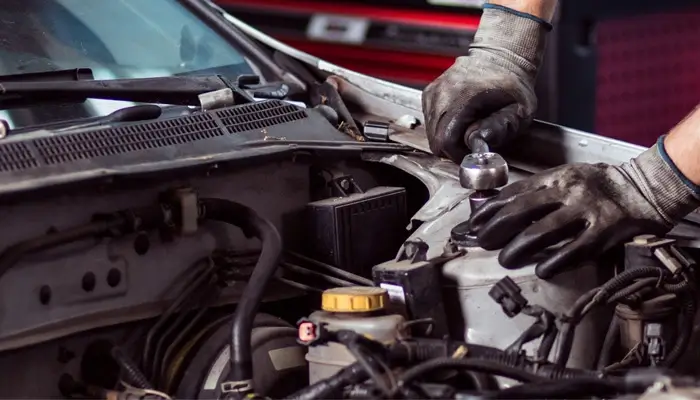NHTSA Discusses Traffic Safety on “Our American States” Podcast
Steven Cliff, acting administrator of the National Highway Traffic Safety Administration (NHTSA), recently appeared on the Our American States podcast. The podcast is hosted by Edward Smith and produced by the National Conference of State Legislatures. Cliff discussed the recent increase in traffic fatalities, and NHTSA’s upcoming strategy for the future. We wanted to share the key points from their conversation.
NHTSA’s Upcoming Focus Areas
Despite fewer people on the roads in many states, traffic fatalities increased by 7.2 percent during 2020. Cliff and Smith discussed how these fatalities are caused by a combination of behavioral failures, technology, and distraction. NHTSA will continue to remain focused on:
- Saving lives — NHTSA works with law enforcement, the Department of Transportation, and other organizations to make roads safer.
- Preventing injuries — through educational opportunities and behavioral studies, NHTSA aims to educate everyone around safe driving practices in hopes of preventing accidents.
- Enhancing the economy by reducing traffic — NHTSA not only studies traffic accidents, they study traffic in general and are constantly looking for ways to innovate and make driving safer for drivers and the environment.
- Education — NHTSA is a data-driven organization and they use the data to inform their marketing campaigns for the public good. They also use data to uncover educational opportunities around behavioral issues, like distracted driving.
NHTSA works with federal partners to investigate a number of issues related to traffic safety, including fuel economy standards, emergency services, passenger safety, behavioral issues and technology related to safety. They are a small organization, but they have the power to declare a recall if a newer technology has an issue. This allows for innovation, because if automakers are developing a new technology, NHTSA can hit pause and handle any safety issues before they impact the public.
Traffic Fatalities Increased in 2021
During the year 2020, many unusual and unprecedented things happened, most notably, a global pandemic. Unfortunately, 2020 also brought with it the first increase in traffic fatalities in many years. Traffic fatalities were up significantly, by 7.2 percent.
“This is a really large increase considering we’ve made progress over the last few decades to reduce fatalities,” Cliff said. “It’s pretty evident that the increase last year was not a change to vehicles or infrastructure, it was a change in behavior.”
Cliff went on to clarify that the increase was due to a number of different behaviors exhibited by drivers, including:
- Not wearing a seatbelt — wearing a seatbelt no matter where you are seated in the car is key. Several fatalities could have been avoided if occupants had their seatbelt on.
- More impaired driving — more people are drinking and driving, or using drugs and driving. Some are combining the two.
- Increased distractions — these distractions could be texting, changing radio stations, or paying more attention to passengers than the road.
- Speeding excessively — Cliff noted that there has been a dramatic increase in excessive speeding. More people are speeding, and not just a few miles over posted limits. People are reaching speeds up to and in some cases over 100 mph in some cases. It’s unclear exactly why, but some have correlated this change to the emptier roadways during the pandemic. The lack of traffic allowed people to attain these higher speeds.
All these issues on their own could cause an accident, but adding excessive speed and no seatbelt to the mixture turns those accidents into tragedies.
Cliff said changing these types of behaviors is really important, and NHTSA is working with state partners to get the word out about the dangers stemming from impaired and unsafe driving. NHTSA works with traffic partners and local law enforcement to educate the public about dangers.
Vulnerable Populations Most Impacted by Unsafe Driving
Cliff also noted that there are certain populations that are more heavily impacted by traffic safety. Over the last two decades, there has been a 50 percent increase in pedestrian deaths. This is troubling, said Cliff, because people walking and biking is beneficial for a number of reasons.
Traffic safety impacts these pedestrians and cyclists, and NHTSA is focused on improving safety for all. Some potential solutions include automatic emergency braking, education, and initiatives to improve safety for vulnerable road users. Cliff said it will take a lot of cooperation to ensure there is a safe system approach, with technology, infrastructure, and behavioral research working together to ensure less risk.
Young People and Traffic Safety
Many young people think they are invincible, but sadly this is not the case. While youth does afford more resiliency, it does not translate to immunity from traffic fatalities. Vehicle crashes are behind 50 percent of unexpected deaths of those aged 15-24. It’s a leading cause of death of young people, but it’s not discussed nearly enough. Cliff said he feels the issue needs more attention.
Many of the vehicle crashes causing fatalities resulted from younger drivers speeding, texting, not wearing a seatbelt, getting distracted by passengers, or because of impairment. Of course, these are often major factors in all crashes, but they’re particularly prominent in younger, inexperienced drivers.
Traffic fatalities also do not hit diverse populations in the same way, especially when it comes to race and vulnerable groups. Traffic fatalities impact Black populations far more than white populations. Cliff said equity is top of mind for NHTSA. They’re looking at previous data and collecting further data to understand the impact of traffic accidents on these populations. Addressing issues of racial inequity improves life and safety for all populations.
Impaired Driving a Consistent Safety Issue
NHTSA works to research technology that is effective in preventing drunk driving and keeps drivers safe. Cliff said they also focus on education. The tide of public opinion is continuing to turn more against impaired driving. The current attitude is that it’s unacceptable behavior, and Cliff hopes that continuing education efforts will help further this narrative. Education and understanding the negative outcomes around the poor choice of driving under the influence will hopefully convince more and more people not to risk it.
How Intoxalock Can Help
Intoxalock allows drivers to get back on the road safely after a DUI. Our ignition interlock devices will not allow you to start your vehicle with alcohol in your system. This prevents you from driving drunk and possibly getting a repeat offense. Some people also choose to install an ignition interlock voluntarily as a sobriety aid. No matter the reason, if you are looking to install an interlock, we can help. Contact us at 833-623-0200 to speak to a state specialist or fill out this form and someone will reach out.




